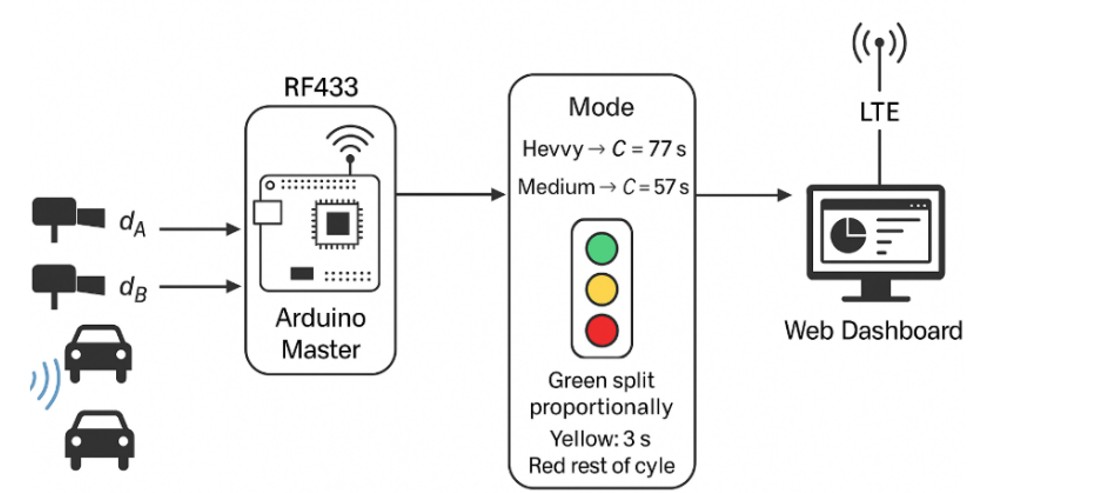Real-time traffic management system based on ultrasonic sensors using LTE communication

DOI:
https://doi.org/10.62110/sciencein.jist.2025.v13.1181Keywords:
LTE (long term evolution), Arduino-based system, Smart traffic management, Real-time adaptive control, LTE (long term evolution), Vehicle density, wireless sensor networkAbstract
Efficient traffic management is a growing challenge in urban areas due to increasing vehicular density and congestion. This work presents the design and implementation of an intelligent traffic light control system that dynamically adjusts signal timings based on real-time traffic conditions. The system utilizes ultrasonic sensors to measure vehicle density, with the data wirelessly transmitted via RF433 modules to a central Arduino-based master controller. The master processes the data and communicates with two slave controllers over the I2C protocol to dynamically control traffic lights and display timings on 4-digit LED displays. In addition to local traffic management, the system incorporates LTE (long term evolution) communication to transmit traffic data to a remote server, enabling real-time monitoring and analytics for centralized traffic management. Traffic light cycles are dynamically adjusted: for high-density traffic (distance ≤ 20 cm), the cycle extends to 40 seconds, while for normal conditions (distance > 20 cm), the default 30-second cycle is maintained. This adaptive approach optimizes traffic flow and minimizes delays at intersections. The work was tested in a simulated environment demonstrating its ability to adapt to varying traffic conditions and efficiently manage traffic flow. The integration of low-cost sensors, wireless RF communication, and LTE-based server connectivity ensures scalability for urban and regional deployment. This work highlights the potential of IoT-enabled, real-time traffic systems in smart cities, providing both localized control and centralized data-driven insights for reducing congestion and improving urban mobility. This work adapts traffic light cycles dynamically, extending green light duration for high-density traffic while maintaining efficiency during normal conditions. Simulation results demonstrate improved traffic flow and reduced congestion. This low-cost, scalable approach provides a smart traffic solution for urban mobility and integrating real-time data analytics with adaptive traffic management.
Downloads
Downloads
Published
Issue
Section
URN
License
Copyright (c) 2025 Mamta Chauhan, Rani Astya, Sonia Arora, Manali Gupta

This work is licensed under a Creative Commons Attribution-NonCommercial-NoDerivatives 4.0 International License.
Rights and Permission







